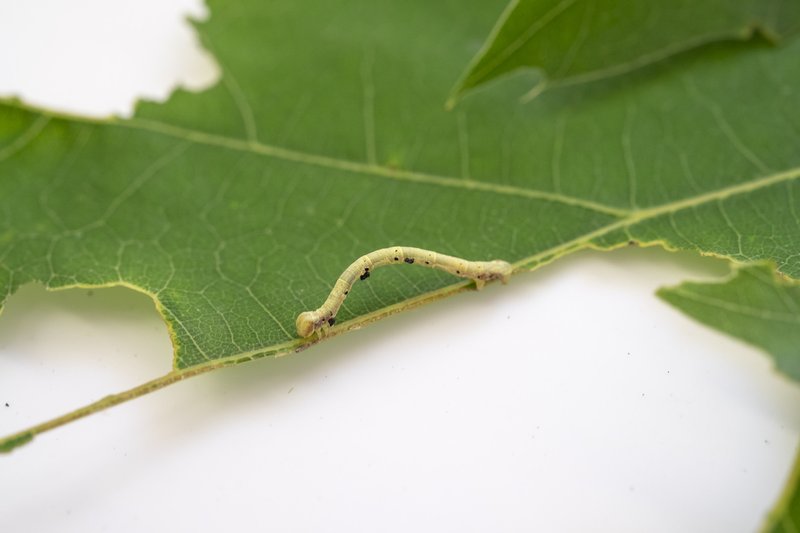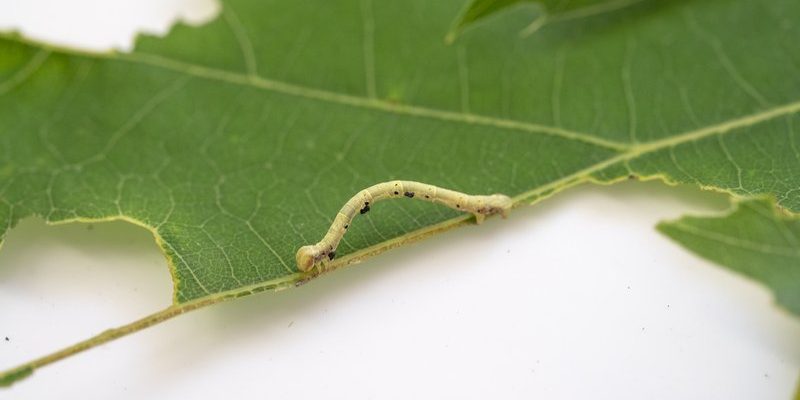
You might be wondering why anyone would want to study inchworms specifically. Well, they’re an excellent subject for science projects because they exhibit interesting behaviors, such as how they move, feed, and react to different stimuli. Plus, inchworms are easily accessible in many environments, from gardens to forests. So grab your notebook and let’s dive into the ins and outs of documenting inchworm behavior!
Understanding Inchworms
Before you start observing, it’s helpful to know what exactly an inchworm is. Interestingly, “inchworm” isn’t a scientific name—it’s more of a nickname. Inchworms are actually the larval stage of certain moths, most commonly from the Geometridae family. They’re known for their unique way of moving, which involves looping their bodies—hence the name “inchworm.”
These little guys can vary in color and size, allowing them to blend in with their surroundings. This camouflage is one of the reasons they’ve survived in various habitats, from forests to home gardens. Inchworms usually feed on leaves, making trees and shrubs their favorites. Understanding their environment can give you clues about their behavior, so take some time to learn about their preferred habitats.
Another interesting fact is that inchworms can be found almost everywhere, especially during the warmer months. They’re often more active in the morning or late afternoon, so plan your observations accordingly. Knowing when and where to find them will set the stage for all your documenting efforts.
Gathering Your Materials
Now that you have a grasp on what inchworms are, it’s time to gather your materials. You don’t need anything fancy, but a few key items will make your documentation easier and more effective. Here’s a quick list for you:
- A notebook or observation journal
- Pencil or pen
- A camera or smartphone for photos
- A measuring tape or ruler
- Access to a computer for further research (optional)
Keeping a dedicated notebook helps you stay organized as you document your findings. Writing down each observation, including the date and time, will help you identify patterns later. Plus, if you’re taking photos, you can easily reference them while writing.
You might also consider using colorful pens or highlighters to differentiate your notes. This can make the information more engaging and easier to read. After all, documenting inchworm behavior should be as fun as it is informative!
Choosing Your Observation Location
Where will you go to observe these little marvels? Inchworms can often be found in gardens, woods, or even parks. Look for areas with lots of trees or shrubs, as inchworms love to munch on leaves. Choose a location that’s safe and accessible, preferably one where you can return several times to observe changes over days or weeks.
When you arrive at your chosen spot, take a moment to observe your surroundings. Are there signs of inchworms? Check the leaves for any bites or holes; that’s often a telltale sign of their dining habits. If you’re lucky, you might see one inching its way along a branch. Make sure to look up and down; inchworms can be camouflaged among leaves and twigs.
It’s also a good idea to visit your spot at different times of the day. You might notice that inchworms are more active during certain hours. Documenting these variations can add depth to your project, helping you understand their behavior better.
Documenting Behavior: What to Observe
Now that you’re ready to observe, what should you actually be looking for? Here’s a breakdown of key behaviors to document:
- Movement: How do they move? Do they inch along slowly or are they quick to react to movement around them?
- Feeding: What leaves do they prefer? Do they munch quietly or seem to chew more vigorously at certain times?
- Reaction to stimuli: How do they respond to gentle taps or shadows? Do they freeze, move away, or backtrack?
- Interactions: Do they interact with each other? Are they solitary or do they move in groups?
Taking notes on these behaviors can provide interesting insights for your project. For instance, if you notice that inchworms freeze when they sense danger, that behavior connects to their survival instincts. It can be fascinating to draw connections between their actions and their environment.
Recording Your Findings
As you observe inchworms, make sure to record your findings immediately. Use your notebook to jot down what you see, including the date, time, and any environmental factors like weather or nearby plants. Here’s a simple way to structure your observations:
1. **Date and time of observation**
2. **Location details** (noting anything special about the area)
3. **Specific behaviors noted** (movement, feeding, reactions)
4. **Any photos taken** (with descriptions)
This structured approach not only keeps your observations organized but also aids in identifying patterns over time. When you look back through your notes later, you’ll be able to see trends, like what time of day they were most active or what plants they preferred.
Analyzing Your Data
Once you’ve gathered enough data, it’s time to analyze your findings. Start by comparing your notes to look for patterns. For instance, did you notice that inchworms preferred certain leaves over others? Maybe they were more active during cooler parts of the day.
You might want to create charts or diagrams to visually represent your findings. This could help in summarizing your data effectively. For example, a simple bar graph showing the number of inchworms observed on different plants can illustrate preferences clearly.
It’s also beneficial to research inchworm behavior in existing scientific literature. You might find studies that align with your observations, helping you formulate conclusions. Don’t forget to cite any sources you refer to in your project.
Sharing Your Project
Finally, it’s time to share your findings! Whether it’s for a school project, a science fair, or just for fun, presenting your work can be exciting. Consider creating a poster or a slideshow to showcase your observations creatively. Use visuals from your photos and graphs to make it engaging.
When you present, explain your methodology—how you chose your location, what you observed, and what conclusions you drew. Sharing your experience in documenting inchworm behavior can inspire others to explore the wonders of nature, too.
Connecting with your audience can be as simple as inviting questions. Your enthusiasm can spark interest in science among your peers, making your project more than just a grade—it can be a stepping stone to further exploration.
In conclusion, documenting inchworm behavior for a science project is a rewarding journey that combines observation, research, and creativity. By following these guidelines and enjoying the process, you’ll not only learn about inchworms but also develop valuable skills that can apply to countless future projects. Happy observing!

